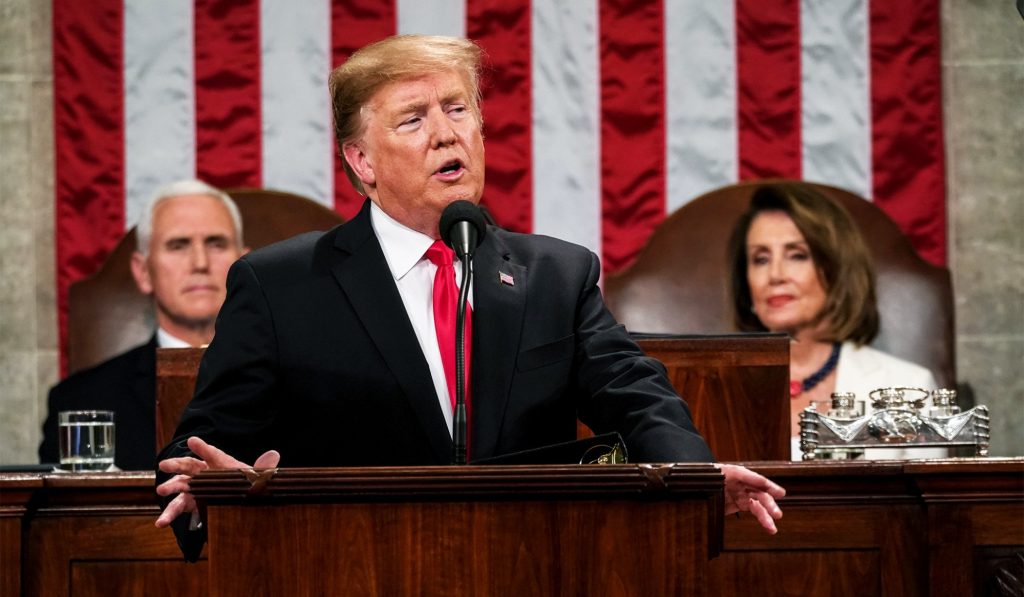By Andy Puzder • The Morning Call
Anyone listening to President Donald Trump and to Democratic presidential hopefuls hears an almost Dickensian tale of two very different Americas.
The president takes “the best of times” view and spoke during his State of the Union address about “an unprecedented economic boom” in which “our economy is thriving like never before.”
Democratic presidential hopefuls take the “the worst of times” view and speak of an America that works only for the rich, while working-class paychecks fail even to keep up with the cost of living and people are struggling to get by.
Is either side right?
The American public appears to increasingly share Trump’s sunny view. A Gallup poll released on Monday, under the headline “Americans’ Confidence in Their Finances Keeps Growing,” found that more than two-thirds — 69 percent — of Americans expect to be better off in the coming year. That’s “only two percentage points below the all-time high of 71%” recorded 20 years ago. The poll was based on telephone interviews with 1,017 adults conducted between Jan. 2 and Jan. 10.
Of those surveyed, 50 percent said they were “better off today than they were a year ago.” That response is “a post-recession milestone — the first time since 2007 that at least half of the public has said they are financially better off than a year ago.” There have only been 11 times in 109 Gallup polls since 1976 where “at least half of those polled said they were in better financial shape than they had been a year prior.”
Those saying they are worse off than a year ago, those for whom the economy presumably is “just not working,” fell to 26 percent, “the lowest level since October 2000.”
The public’s rising confidence isn’t misplaced. The U.S. economy might not be in unprecedented good shape, but it is certainly thriving.
Economic growth during the first full six quarters of the Trump administration has averaged 3 percent, double the nearly 1.5 percent average for President Barack Obama’s last six full quarters, according to the federal Bureau of Economic Analysis. For 2018, the first full calendar year following the Republican tax cuts and the president’s regulatory reductions, it looks like gross domestic product will grow at a 3 percent or better pace for the first time since 2005.
The benefits of that growth appear widespread.
More Americans are working than ever before, and the unemployment rate has been at or below 4 percent for 11 straight months, the longest such streak in nearly 50 years. During that stretch, the unemployment rates for African Americans, Hispanics, Asian Americans, people with only a high school education, women, teenagers (ages 16-19), veterans and disabled Americans have all either hit or approached historic lows.
With employers competing for the best employees, wages rose last year at the fastest pace in a decade. It appears that this competition for employees will intensify. At the end of December, a record 7.3 million job openings were available, with only 6.3 million people unemployed (meaning they had looked for but not as yet found a job in the past 30 days). It was the 10th month in a row with more job openings than people unemployed.
The largest gains for December were in the construction sector (+88,000), as you would expect in a growing economy. For the first time in decades, blue-collar workers are more difficult to find than white-collar workers.
Yet contenders for the 2020 Democratic presidential nomination see a different America. When announcing her candidacy this month, Sen. Elizabeth Warren of Massachusetts described a country where “tens of millions of people are struggling just to get by.” She berated “a rigged system that props up the rich and the powerful and kicks dirt on everyone else.” In her view, the economy works for the rich and is “just not working for anyone else.”
Sen. Kamala Harris of California kicked off her candidacy on Jan. 28 by bemoaning a United States in which the “economy today is not working for working people.” Similar laments can be heard from other candidates.
Some of the contrast is political. Following the 2016 presidential election, Republicans and Democrats significantly altered their perceptions of how they were doing financially. Nonetheless, Gallup found that “among some of the key groups that generally vote Democratic, a plurality or majority say they are better off,” including people under 30, women and liberals. Notably, this group also includes people with annual household incomes under $40,000, an impressive 45 percent of whom say they are better off, vs. 35 percent who say they are worse off.
It’s a heavy lift to convince people they are worse off when more of them are working, earning higher wages and taking home more of what they earn because of tax cuts. Democrats seem to be asking: “Who are you going to believe, us or your wallets?”
Is it the best or the worst of times? It’s still early, but these economic times are certainly the best that Americans have experienced in many years. And, not surprisingly, they know it.

